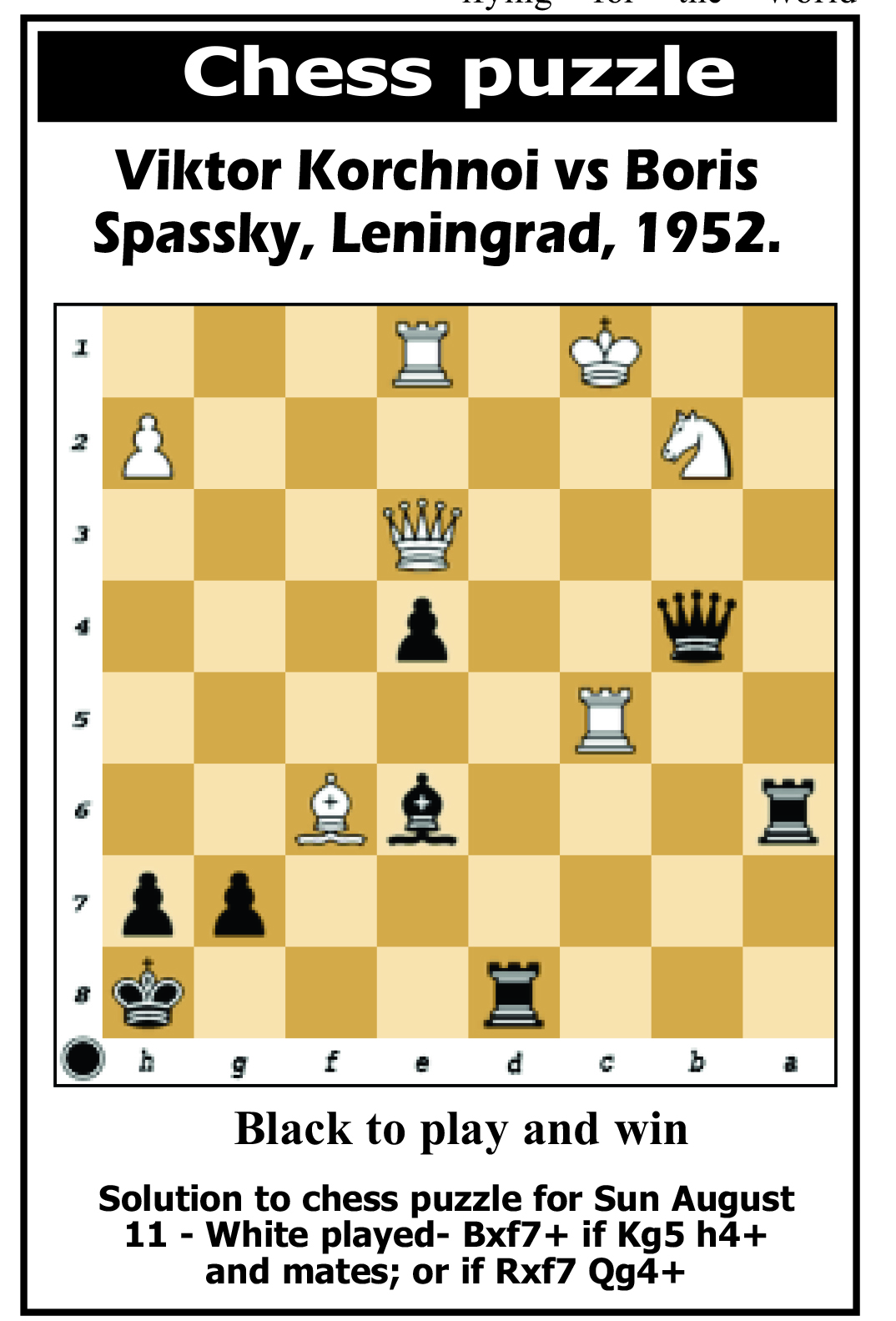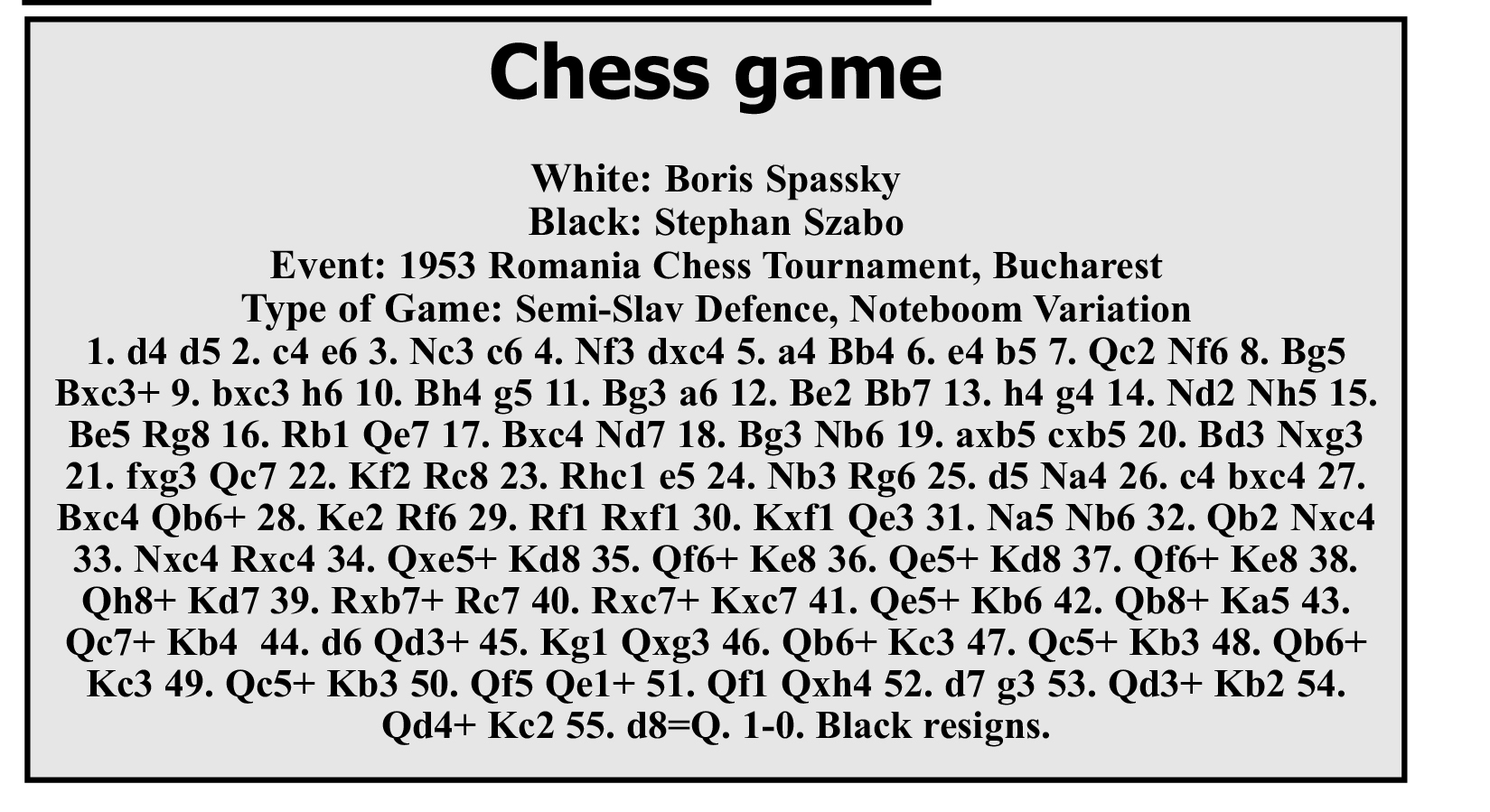 Russia’s chess grandmaster Boris Spassky became a household name in the West during his encounter with America’s Bobby Fischer in the 1972 “Match of the Century” World Championship contest. I can recall my grandfather referring to him as “Passky” and to Fischer as “that Yankee boy” (no disrespect meant).
Russia’s chess grandmaster Boris Spassky became a household name in the West during his encounter with America’s Bobby Fischer in the 1972 “Match of the Century” World Championship contest. I can recall my grandfather referring to him as “Passky” and to Fischer as “that Yankee boy” (no disrespect meant).
The news about the Match was publicised on the BBC, which we followed ardently on the radio. As time went by and I learned the game, I realised how attacking and scholarly a player Spassky was. If in the mid-1960s and early 1970s the Soviet Union boasted the finest chess players worldwide, Spassky distinguished himself by beating the best of his colleagues and qualifying for the World Championship.
 Spassky was world champion from 1969 to 1972 and was competent with both the king pawn and the queen pawn openings. He was generally regarded as a universal player. Spassky played his first world championship match in 1966. Tigran Petrosian was the world champion at the time. Spassky lost that match by an 11 ½ to 12 ½ margin. However, three years later he defeated Petrosian and became the tenth world champion in chess history.
Spassky was world champion from 1969 to 1972 and was competent with both the king pawn and the queen pawn openings. He was generally regarded as a universal player. Spassky played his first world championship match in 1966. Tigran Petrosian was the world champion at the time. Spassky lost that match by an 11 ½ to 12 ½ margin. However, three years later he defeated Petrosian and became the tenth world champion in chess history.
One interesting thing about Spassky’s games is that he played the Leningrad Variation of the Nimzo-Indian defence almost to perfection against the finest players in the world. In 30 games of this Nimzo-Indian ( 1. d4 Nf6 2. c4 e6 3. Nc3 Bb4 4. Bg5 ) Spassky won 17 and lost only one!
I encourage young players to replay, and study, the Nimzo-Indian games of Spassky, especially the boys and girls who would be representing Guyana at the 2024 Olympiad in Budapest, Hungary. There are a number of queen sacrifices in Spassky’s games; therefore, replaying the games should be an enjoyable exercise.
Spassky’s enthusiasm for chess aided by his talent made him one of the most prolific players in the Soviet Union. He worked his way up within the chess world until he wore the crown of world chess champion.










